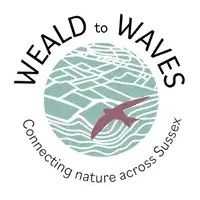Collaboration at scale: Update on our Local Nature Recovery Strategy
By Libby Drew - 27 May 2024
The introduction of Local Nature Recovery Strategies (LNRS) represents a transformative approach to conservation in England, mandated by the Environment Act 2021. These strategies aim to preserve remaining crucial natural habitats and identify new opportunities for restoration or creation to benefit both wildlife and people. Sussex, a county rich in biodiversity and natural beauty, is at the forefront of this initiative, developing two county-level strategies for West Sussex and East Sussex, including Brighton & Hove.
The process involves an extensive collaboration across the county, inviting residents, community groups, land managers, and organizations to contribute to a shared vision for nature's recovery. The initiative will produce two blueprints, identifying targeted areas for habitat restoration and species recovery, thus directing funding, investment, and action effectively. Central to this effort in Sussex is the Weald to Waves working group, which focuses on landscape connectivity, ensuring that habitats are not only restored but also interconnected, facilitating wildlife movement and ecological resilience.
The urgency for such strategies is underscored by the State of Nature Report 2023, revealing the UK as one of the most nature-depleted countries globally, with one in six UK species at risk of extinction. Nearly half of the UK's wildlife has vanished since the 1970s, highlighting the critical need for coordinated action. The LNRS process in Sussex, like elsewhere, follows a structured approach as outlined by Defra, starting with creating baseline information on key habitats and species, gathering local priorities, shortlisting these priorities, identifying potential measures, and finally, creating the LNRS documents including a Statement of Biodiversity Priorities and a Local Habitat Map.
The LNRS for Sussex is especially significant due to the county's unique landscapes, from the chalk grasslands of the South Downs to the rich woodlands of the Weald and the coastal habitats. Each offers essential services, from food and water provision to climate regulation and flood protection, all while supporting local economies and community wellbeing.
The draft LNRS documents, upon completion, will undergo public consultation before their publication in 2025. They will then be reviewed every 3-10 years to assess progress and adapt strategies as necessary. This iterative process ensures that the strategies remain relevant and effective in the face of changing environmental conditions and challenges.
By involving a broad spectrum of the community in the creation of these strategies, Sussex is not just planning for the recovery of nature but is also fostering a deeper connection between its people and the natural world. The involvement of groups like Weald to Waves underscores the commitment to ensuring that the strategies are not only comprehensive but also represent the needs and aspirations of the entire community for a more sustainable and biodiverse future. Find out how to get involved here.

